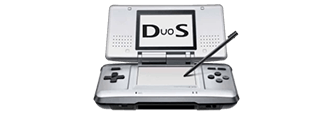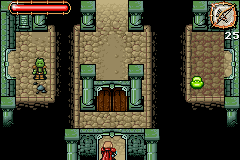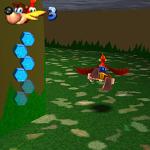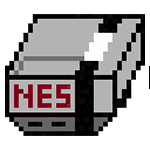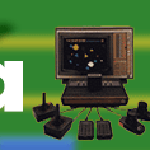Nintendo DS
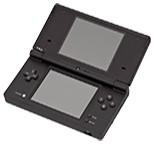
Nintendo DS Specifications
The Nintendo DS was Nintendo’s successor to the Game Boy Advance. It introduced two very stand out unique features to the handheld market. While the Nintendo DS did make use of the Game Boy Advance’s SP clamshell design, the way it utilized it much differently. The biggest and most obvious of these unique features is the inclusion of two LCD screens that work in tandem, the bottom screen also acts as a touch device allowing interaction with the images on screen. Something, that at the time was quite unusual and different to the standardized single screen and buttons.
Another feature the Nintendo DS was the addition of a microphone, this was another different feature games could tap into to use to offer unique game play elements, such as blowing smoke off the screen. The other most noticeable feature is its Wi-FI ability that allows it to connect to other Nintendo DS’s, it also had online play through the Nintendo Wi-Fi connection service. However sadly that service was shut down in 2014 making online useless for all games designed for the Nintendo DS. This forces people to the 3DS if they want to enjoy games with online abilities.
The Nintendo DS would end up seeing three separate reiterations of its look and hardware, this is not include the extra large screen versions that were also relate for the DSi version. The first iteration was the Nintendo DS Lite, this retained all the features of the original fat DS but however was a lot slimmer, and included better screens. There was also slight improvement to the hardware inside the console, however this was mainly battery saving changes then performance increases. The DS Lite also retains the backwards compatibility with Game Boy Advance games that the original Nintendo DS allowed.
After the Nintendo DS Lite, Nintendo introduced the DSi. This made a few more changes to the formula, adding a camera to the console, improved Wi-Fi and again better screens. Alongside this it also came with iterations that featured a much larger screen. The underling hardware was also improved which meant there were a few games that were made for the DSi specifically. However most developers chose to make sure the game worked on all three iterations, not utilizing the improvements. Despite all these improvements the Nintendo DSi removed the backwards compatibility for Game Boy Advance games that the fat DS and DS Lite had.
Advertisement
Nintendo DS Emulators
DeSmuME is one of the best NDS emulators around, managing to play the vast majority of games easily and without sacrificing performance, it is also the most portable Nintendo DS Emulators.
no$gba is the first GBA Emulator to offer support for multiplayer link. It is regarded as a highly capable emulator for the GBA while also being one of the best Nintendo DS Emulators around.
Dualis is a NDS emulator that never really got far, its primary purpose ended up being able to run some homebrew and demo software that’s made to test functionality. It fails to run any commercial ROMs.
DuoS was an extremely promising NDS Emulator, showcasing strong performance, allowing the NDS to be emulated on low end systems. This was all while managing to provide decent compatibility.
iDeaS was a popular and promising emulator, managing to achieve almost complete support for the Nintendo DS’s multiple processors. Boasting a high compatibility the only downside was the emulation speed and the incomplete GPU renderer.



